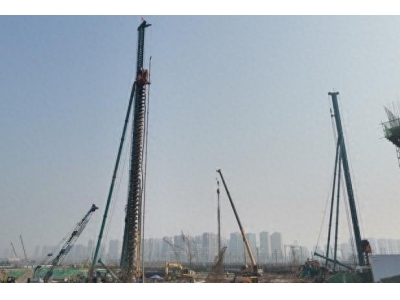一、尼日利亚的工资水平?
进球了,1:0了呵呵~~~~~~~~~~~~~~~~~~~~
二、有在尼日利亚的吗?你对尼日利亚市场有什么看法?
尼日利亚位于西非几内亚湾,是非洲最大的经济体。石油储量非洲第二,世界第十。天然气储量非洲第一,世界第八。在南非被曼德拉和姆贝基总统玩坏了之后,尼日利亚成为非洲最大的经济体。
它的南部沿海地区是热带雨林气候,石油储量丰富,吸引各国的大石油公司来投资开采。由于受欧洲国家影响,民众信奉基督教。而北部隔着撒哈拉沙漠与北非相望,这里的人们大多信仰伊斯兰教。中部是热带草原,土地辽阔,雨水丰沛,适合耕种。
尼日利亚工业基础薄弱,最发达的是石油业---这些企业都是外国创建的,例如壳牌和标准石油。石油出口占据了尼日利亚总出口量的百分之九十以上,是获取外汇的唯一渠道。
尼日利亚货币是奈拉(人民币1元相当于52奈拉),人均GDP大约两千美元,是中国的四分之一。该国最著名的出口商品有两种:石油和婴儿。石油不仅给国家创造了外汇收入,也是不法油贩们最可靠的财源。在沿海地区,私人秘密炼油厂随处可见。这些炼油厂的原油不是自己开采的,而是从外国石油公司偷来的,由于油田大多处于沿海热带雨林地区,河流纵横。油贩们使用小船从油田偷石油,然后拉回自己的炼油厂,用土制蒸馏法简单提炼出汽油后,公开出售。
外国石油公司无法杜绝偷油现象,因为公司员工与油贩子的内外勾结无处不在,所以公司只能睁一只眼闭一只眼。只要收成好,雀能吃多少?每年被偷走的石油与开采量相比,不过九牛一毛,因此石油被盗逐渐被公司视为一种合理损耗。油贩子的产品在当地就能销售,相对于正规加油站,居民更喜欢从街头小贩手里买汽油,因为便宜省钱。油贩子还把汽油走私到邻国,他们使用的最便捷的交通工具是摩托车,一辆摩托车能够运输的汽油,可以达到惊人的七百公升,堪比一辆轻型卡车。摩托手运七百升汽油走三十公里,可以挣到五欧元。想象一下一个人骑着摩托,周身挂满油桶的画面,就让人不寒而栗。这真是刀头子舔血的勾当,一旦发生交通事故,摩托车发动机的火花塞就是七百升汽油的打火机,这时候,就是摩托手给自己办丧事的时候,瞬间火化连殡仪馆都不必去了。
在沿海地区,有百分之二十以上的人口从事石油走私。从某种程度来说。它是尼日利亚的支柱产业。
卖婴儿是很多尼日利亚女孩的生存方式。在人贩子的操控下,她们大多在十五六岁就开始从事婴儿生产,有特定的年轻男子在指定场所与这些女孩多次发生性关系。直到女孩怀孕为止。我看到过一个报道,很是惊人。一个尼日利亚男人和十二个黑人女孩同居,他每天辛苦劳作,让十二个女孩都怀孕了。我很想给这个男人炖碗鸡汤补补身子。梦同时把十二个女孩整怀孕,除了变形金刚也就剩他了,人才啊绝对要保护,以实现可持续发展。
人贩子会把怀孕的女孩集中在一个秘密地点生活。婴儿出生后,年轻母亲可以得到大约七十万奈拉。而这些婴儿会以每人一万五千美元的价格卖到中东和欧洲。在2006年的尼日利亚,婴儿买卖的从业人口达到了七百万。
油贩子和人贩子在尼日利亚十分猖獗,而政府对这些犯罪行为的打击力度却非常小,基本可以视为放任不管。其根本原因在于当地太贫穷,很多人以此谋生。打掉人贩子和油贩子,会产生新的社会问题,或许更难解决。存在的就是合理的,当无法解决民众生计问题时,视而不见听而不闻可能却是最佳的选择。
三、尼日利亚 棉花
尼日利亚棉花行业:发展与挑战
尼日利亚作为非洲大陆的经济强国,其棉花产业一直在该地区占据重要地位。棉花是尼日利亚农业的支柱产业之一,不仅为国内提供就业机会,还为该国贡献了可观的出口收入。然而,尽管取得一定的发展成就,尼日利亚棉花行业面临着诸多挑战,亟待解决。
发展潜力巨大
尼日利亚地处赤道附近,气候适宜,土地肥沃,非常适于棉花生长。长期以来,尼日利亚人民一直依靠棉花产业为生,掌握了丰富的种植经验和技术。尼日利亚的棉花种植面积庞大,产量一度达到非洲之首。
尼日利亚棉花不仅在国内有着广泛的应用,也成为出口的重要商品之一。其品质优良,纤维柔软且富有弹性,深受国际市场的青睐。尼日利亚的棉纺织品远销全球,带动了国内纺织业的发展,为国家经济增长做出了重要贡献。
挑战与困境
尽管尼日利亚棉花产业发展潜力巨大,但目前仍然存在许多困境和挑战需要应对。其中最主要的问题是种植技术和设施落后,限制了产量和品质的提升。
尼日利亚大部分棉花种植仍然采用传统的手工劳动方式,机械化程度较低。种植者缺乏现代化农业设备和技术,导致效率低下,生产成本高昂。同时,由于长时间依赖传统方式种植,土地劣化严重,耕地面积不断减少,严重限制了棉花产量的增长。
此外,尼日利亚棉花面临着棉花纺织业发展不平衡的问题。尽管尼日利亚拥有丰富的棉花资源,却仍然需要从其他国家进口大量纺织品,以满足国内市场需求。这一现象主要源于国内纺织业的技术水平相对滞后,生产效率低下,难以满足国内市场对高品质纺织品的需求。
应对措施
为了促进尼日利亚棉花行业的健康发展,采取一系列措施势在必行。
首先,应加大对棉花种植技术的培训和推广力度。政府可以通过设立培训机构,组织专家进行实地指导,帮助种植者掌握现代化种植技术,提高棉花产量和质量。
其次,需要加大对农业设施的投入。政府可以提供资金支持,鼓励农民购买先进农业设备,推动棉花种植的机械化进程。同时,加强水利建设,提高耕地利用率,减少土地劣化。
此外,政府应推动棉花纺织业的升级与转型。加大对纺织企业的技术支持和资金扶持,鼓励企业引进先进设备,提高生产效率。同时,通过培训和技术合作,提升国内纺织业的竞争力,减少对进口纺织品的依赖。
前景展望
尽管尼日利亚棉花行业面临着重重困难,但只要政府和产业各方共同努力,相信其发展前景依然广阔。
尼日利亚拥有得天独厚的气候和土地资源,有利于棉花的生长和种植。随着科技的不断进步,尼日利亚棉花行业有望实现现代化种植与生产,提高产量和质量,提升国际竞争力。
此外,随着国内经济的不断发展,尼日利亚市场对纺织品的需求将持续增长。尼日利亚作为非洲最大的经济体之一,其内需潜力巨大。只要国内纺织业得以升级和发展,尼日利亚棉花行业必将迎来更加光明的未来。
因此,尽管困难重重,但尼日利亚棉花产业依然充满希望。相信在各方共同努力下,尼日利亚的棉花将在未来发展中大放异彩。
Translation: htmlThe development and challenges of Nigeria's cotton industry
As an economic powerhouse in Africa, Nigeria has always held an important position in the cotton industry in the region. Cotton is one of the pillar industries in Nigerian agriculture, providing employment opportunities and contributing substantial export revenue. However, despite achieving some development milestones, the cotton industry in Nigeria faces numerous challenges that need urgent attention.
Huge development potential
Nigeria is located near the equator, with a favorable climate and fertile land, making it ideal for cotton cultivation. Nigerians have relied on the cotton industry for their livelihoods, accumulating rich planting experience and techniques. Nigeria has a vast area used for cotton cultivation, and its production once reached the top in Africa.
Nigerian cotton is not only widely used domestically but also an important commodity for export. With its excellent quality, the fibers are soft, elastic, and highly sought after in the international market. Nigeria's cotton textiles are exported worldwide, driving the development of the domestic textile industry and making significant contributions to the country's economic growth.
Challenges and predicaments
Despite the immense development potential of the Nigerian cotton industry, it currently faces many predicaments and challenges that need to be addressed. The main issue lies in outdated cultivation techniques and facilities that restrict improvements in yield and quality.
The majority of cotton cultivation in Nigeria still relies on traditional manual labor methods, with a low level of mechanization. Farmers lack modern agricultural equipment and technology, resulting in low efficiency and high production costs. Additionally, due to dependence on traditional cultivation methods for an extended period, soil degradation is severe, reducing the area of arable land and significantly limiting cotton production growth.
Furthermore, Nigeria's cotton industry faces the problem of an unbalanced textile industry development. Despite having abundant cotton resources, Nigeria still needs to import a considerable amount of textile products to meet domestic market demands. This phenomenon is mainly due to the relatively backward level of domestic textile industry technology, low production efficiency, and the inability to meet domestic market demands for high-quality textiles.
Measures to address challenges
In order to promote the healthy development of the Nigerian cotton industry, a series of measures need to be taken.
Firstly, efforts should be made to promote and provide training on cotton cultivation techniques. The government can establish training institutions and organize field experts to provide guidance to help farmers master modern planting techniques, improving cotton yield and quality.
Secondly, investments in agricultural facilities need to be increased. The government can provide financial support to encourage farmers to purchase advanced agricultural equipment, promoting the mechanization of cotton cultivation. Simultaneously, water resource development should be strengthened to increase land utilization and reduce soil degradation.
Additionally, the government should promote the upgrading and transformation of the cotton textile industry. Increasing technical support and financial aid for textile enterprises, encouraging the introduction of advanced equipment to improve production efficiency. Through training and technological cooperation, domestic textile industry competitiveness should be enhanced, reducing dependence on imported textile products.
Prospects and outlook
Although the cotton industry in Nigeria faces many difficulties, with joint efforts from the government and industry stakeholders, its development prospects remain vast.
Nigeria has unique climatic and land resources that are conducive to cotton growth and cultivation. With continuous technological advancements, Nigeria's cotton industry is expected to achieve modernized cultivation and production, improving yield and quality, and enhancing international competitiveness.
Furthermore, with the continuous growth of the domestic economy, Nigeria's market demand for textiles will continue to increase. As one of the largest economies in Africa, Nigeria has enormous domestic demand potential. As long as the domestic textile industry can be upgraded and developed, Nigeria's cotton industry will undoubtedly have a brighter future.
Therefore, despite the significant challenges, Nigeria's cotton industry remains full of hope. It is believed that with joint efforts from all parties, Nigeria's cotton will flourish in its future development.
四、尼日利亚纬度?
尼日利亚联邦共和国,位于北纬06度27分,东经03度24分,处于西非东南部的国家,非洲几内亚湾西岸的顶点,邻国包括西边的贝宁,北边的尼日尔,东北方隔乍得湖与乍得接壤一小段国界,东和东南与喀麦隆毗连,南濒大西洋几内亚湾。
尼日利亚是非洲第一人口大国,总人口1.73亿,占非洲总人口的16%,也是非洲第一大经济体,2013年,尼日利亚国内生产总值(GDP)5099亿美元。
五、尼日利亚国情?
尼国人口众多,资源丰富,市场潜力巨大。
西非和中非各国(除刚果金外)人口平均不到1000万,但尼日利亚一国人口就是1.54亿,是非洲人口最多的国家,几乎比任何一国都多10倍以上,全非洲每5个人中就有一个尼日利亚人,因此尼日利亚有着巨大的消费市场;石油储量居非洲第一,世界第六,是石油输出国组织(欧佩克)成员国之一,具备强大外汇购买能力;尼日利亚是次撒哈拉地区第二大经济国家,年均GDP增长率达到5%,已成为我国西非地区的第一大贸易伙伴。
尼国经济偏科,制造业基础薄弱,工业制品多需进口。
六、尼日利亚国王?
萨尼·阿巴查
尼日利亚国家元首
萨尼·阿巴查上将(General Sani Abacha)(1943年9月20日,卡诺,——1998年6月8日,阿布贾。)尼日利亚前军事独裁者。1993年11月17日——1998年6月8日任尼日利亚国家元首兼联邦军政府首脑。萨尼·阿巴查政权在尼日利亚历史上最富有争议,在他的统治下,尼日利亚实现政局稳定和经济的大幅增长,但也存在大规模侵犯人权和严重的贪污腐败。阿巴查宣布在1998年8月举行大选,10月向文官政府移交权力,但他根本无意组织一场真正的民主选举。在他的操纵下,1998年4月被各政党推举为唯一总统候选人,却在当年的6月8日突然猝死。
七、尼日利亚面积?
尼日利亚全称尼日利亚联邦共和国,位于西非几内亚湾沿岸的最东部,领土面积923768平方公里。
八、尼日利亚网络?
还可以咯,一个人用能有100kb的样子,我是在Lagos,4G大概3500,8G6000,无流量限制的8000的样子,不过要买个swift,9000的样子,也可以包年,貌似6-7万,钱用的是奈拉(25奈拉=1人民币)。手机可以上网,我用的手机卡,一个月1000奈拉,流量100M。
九、尼日利亚海拔?
尼日利亚全国地形复杂多样,地势北高南低。沿海为宽约80公里的带状平原;南部低山丘陵,大部地区海拔200-500米;中部为尼日尔—贝努埃河谷地;北部豪萨兰高地超过全国面积面积1/4,平均海拔900米;东部边境为山地,西北和东北分别为索科托盆地和乍得湖湖西盆地。
十、尼日利亚主食?
目前在尼日利亚主食,因人们的贫富会有不同。
有钱人吃米饭,稍穷点的吃面包,再穷的吃木薯和其他的杂食。






